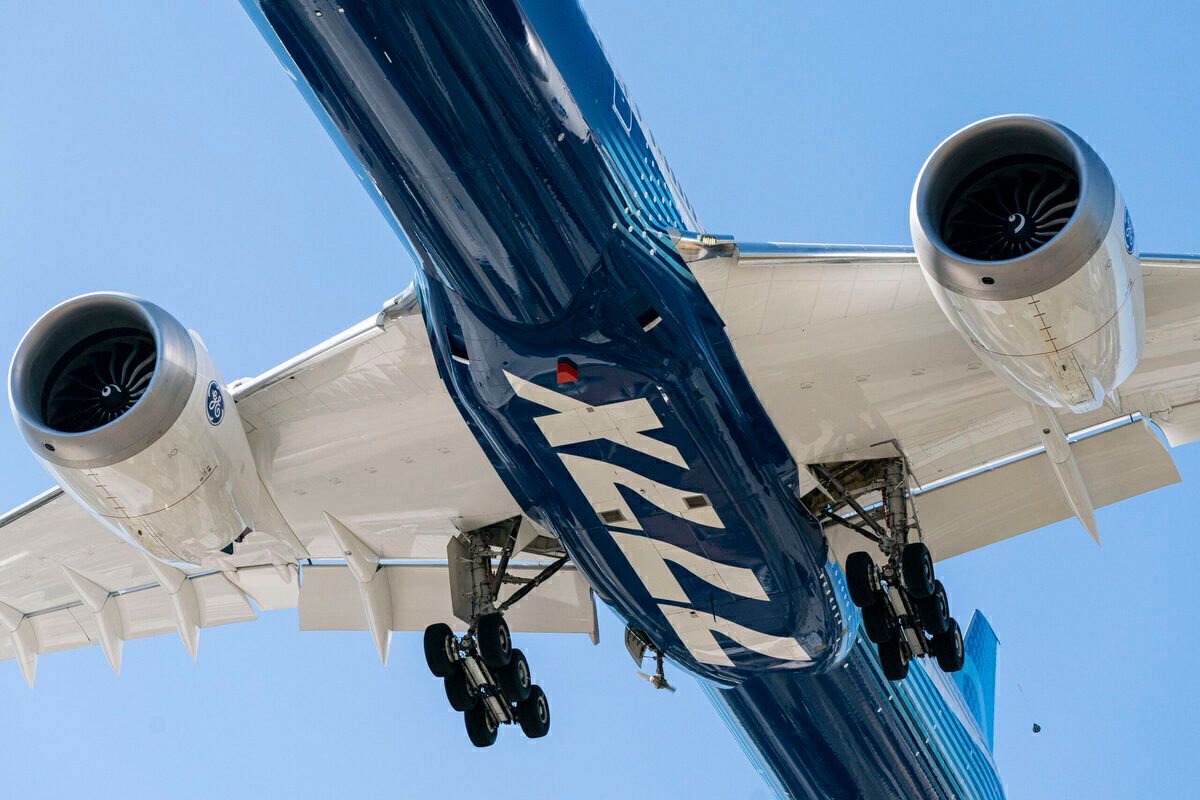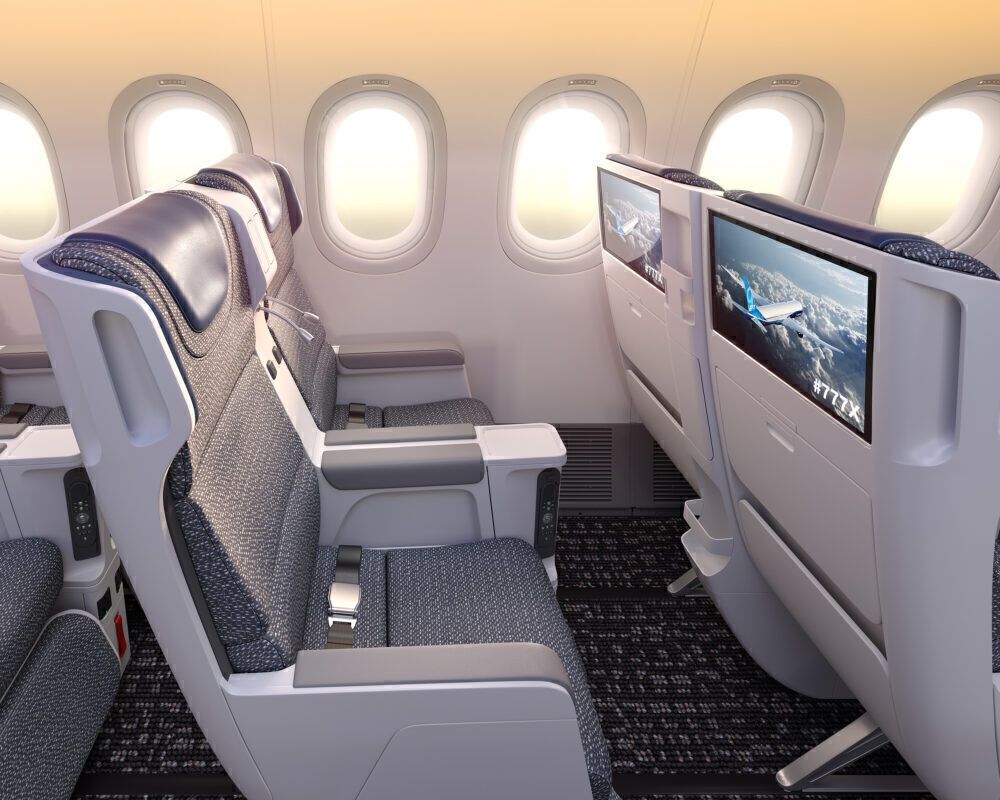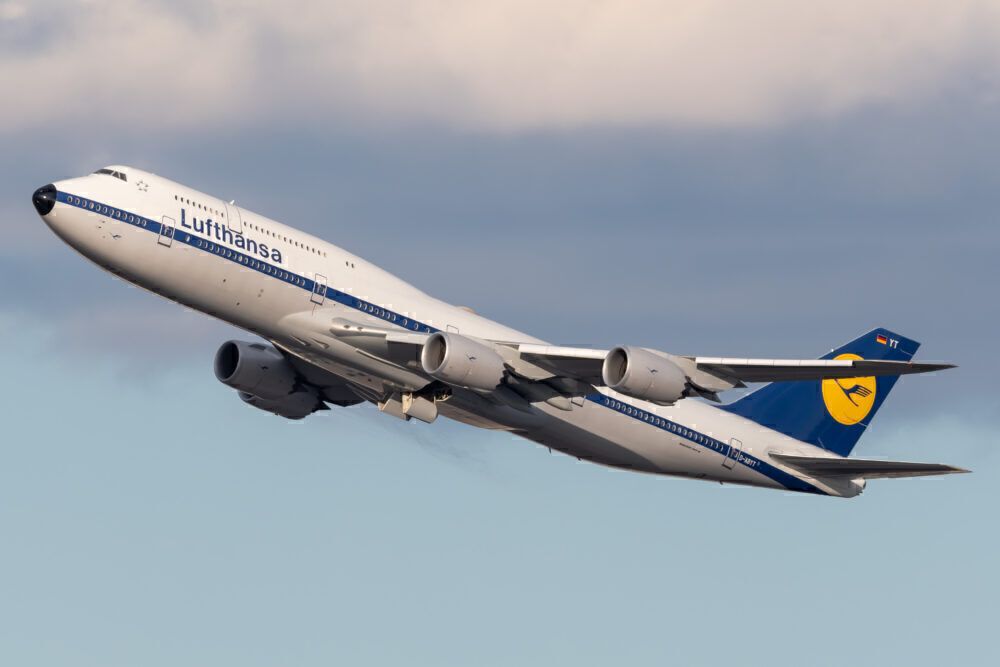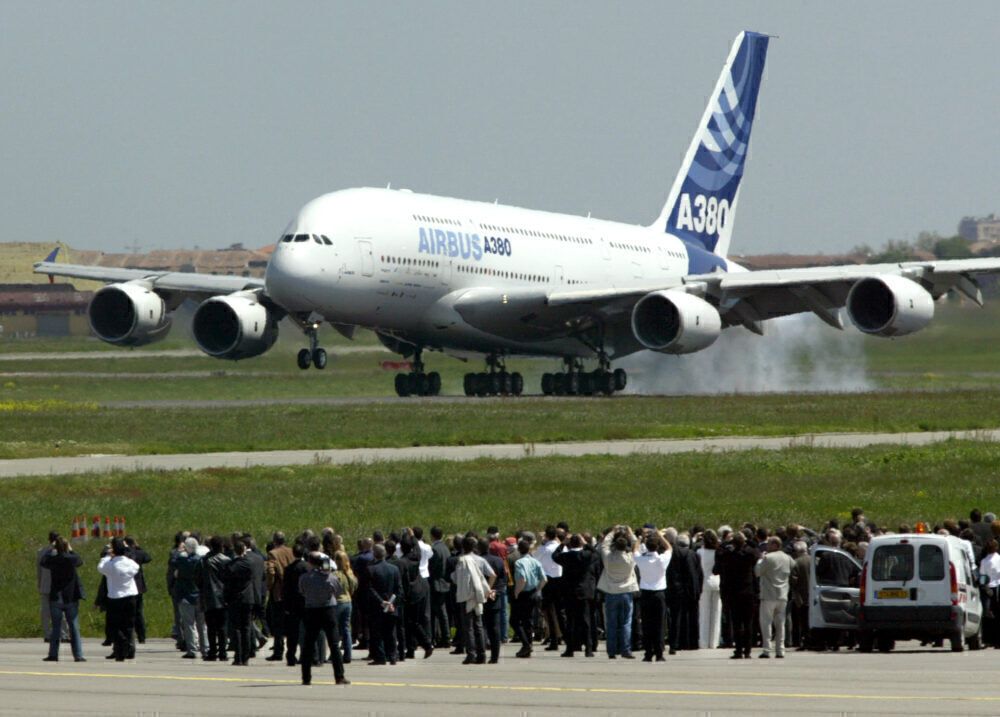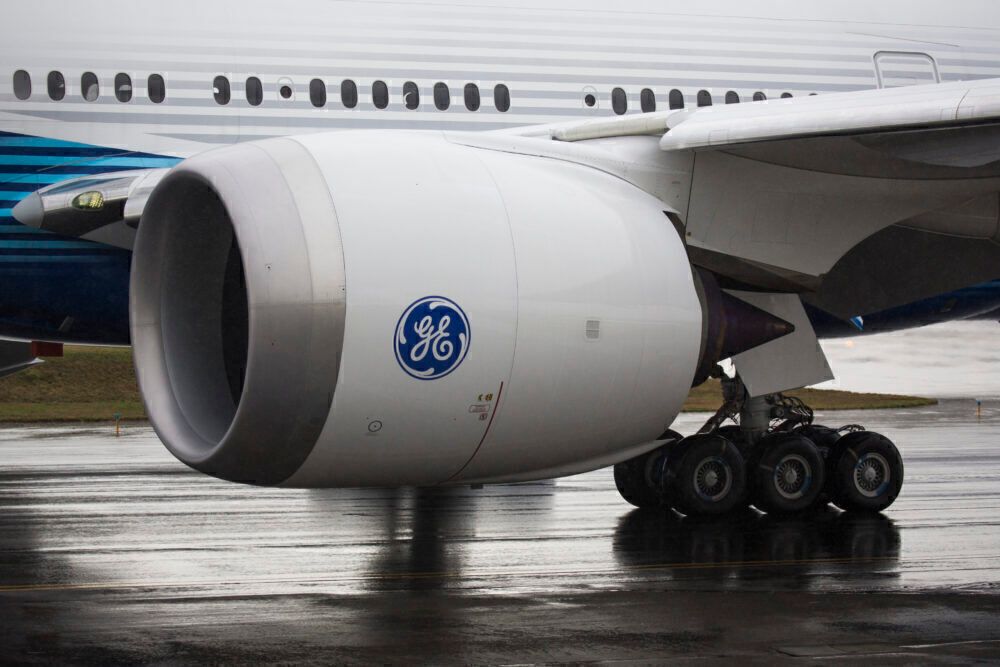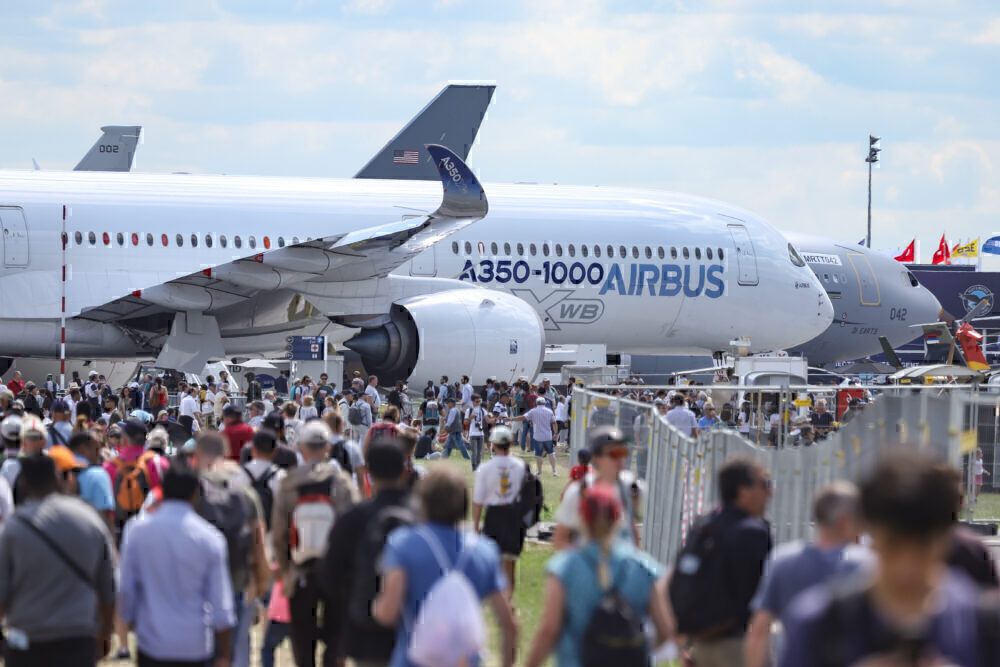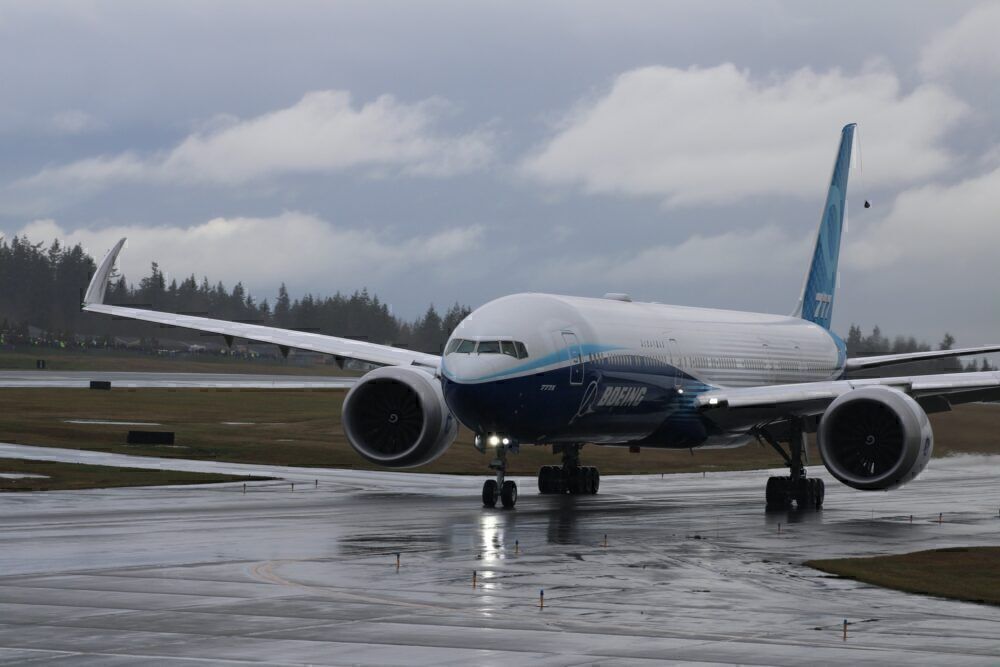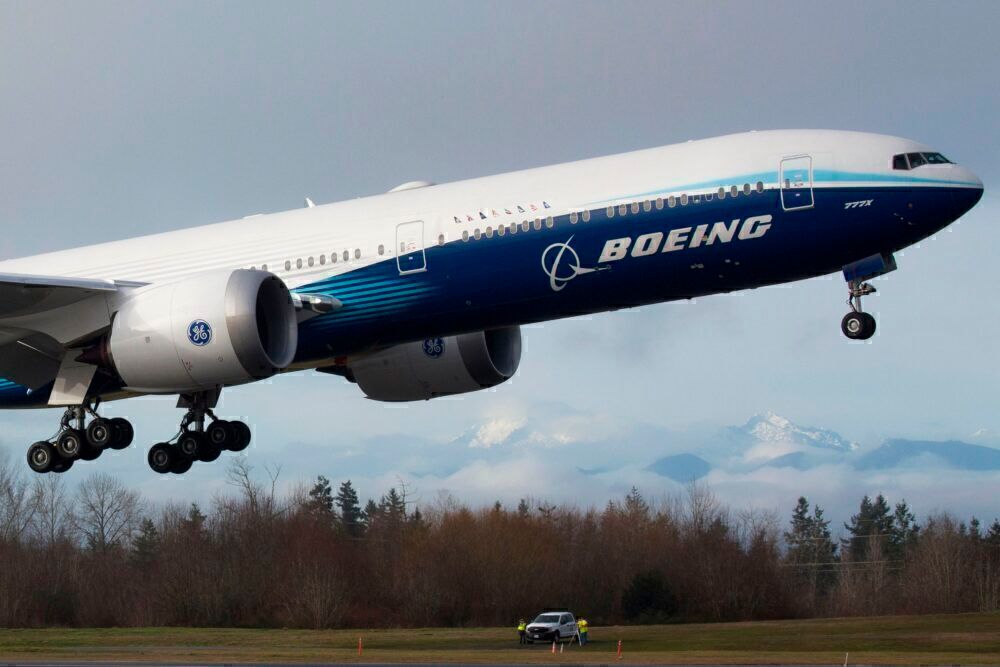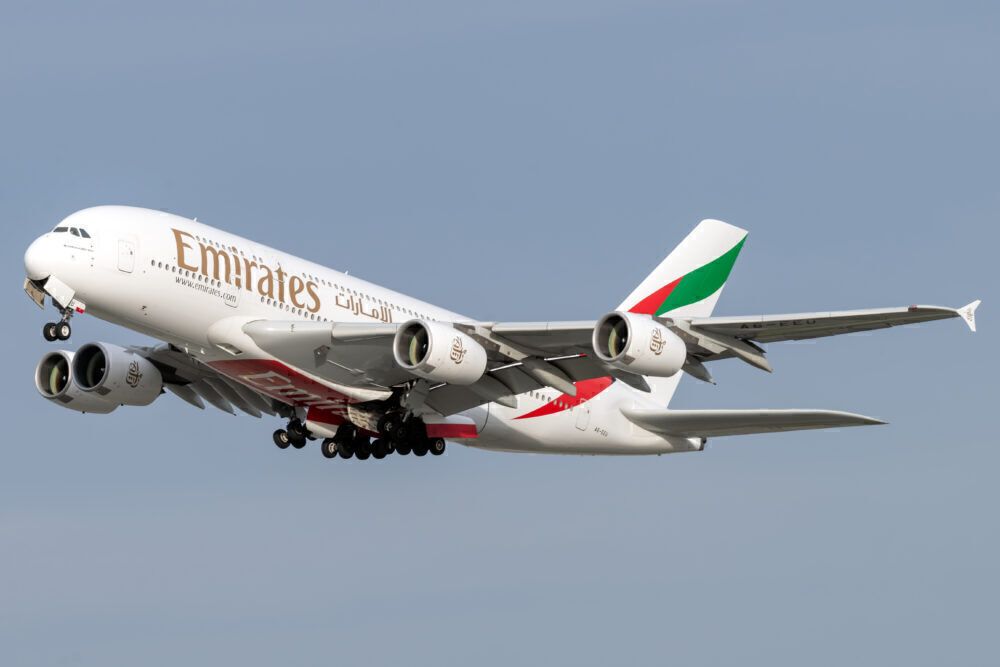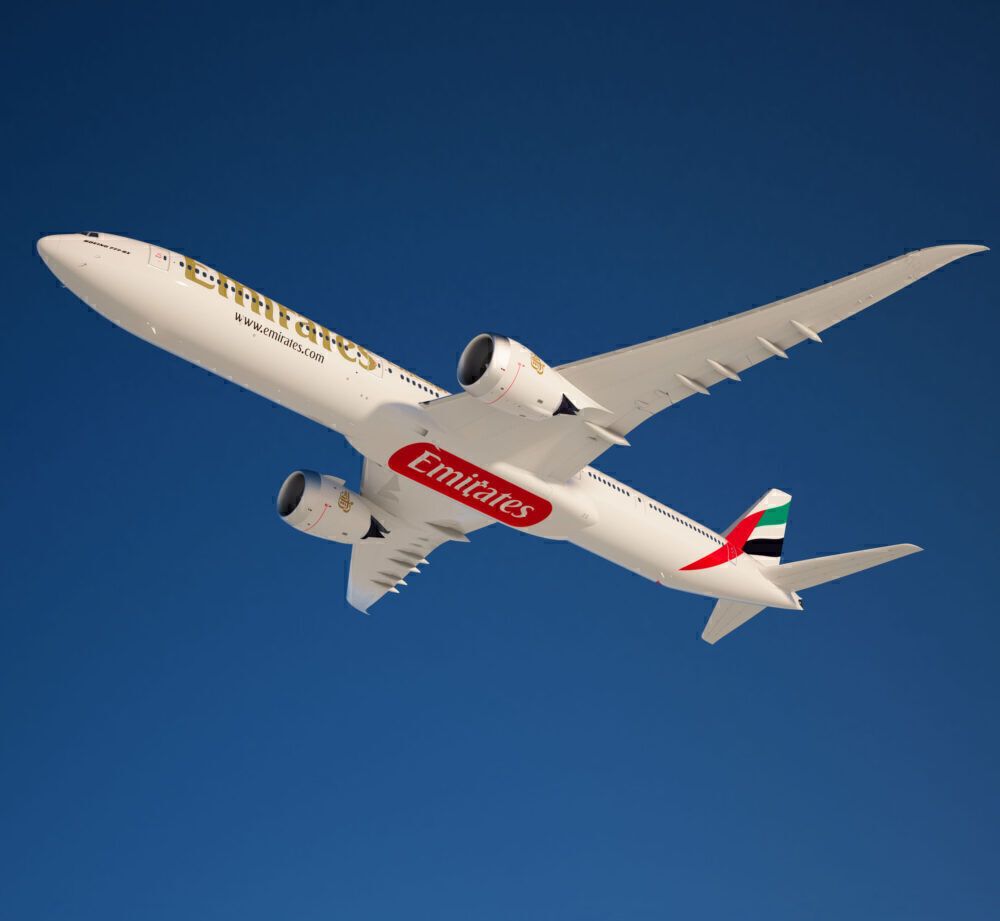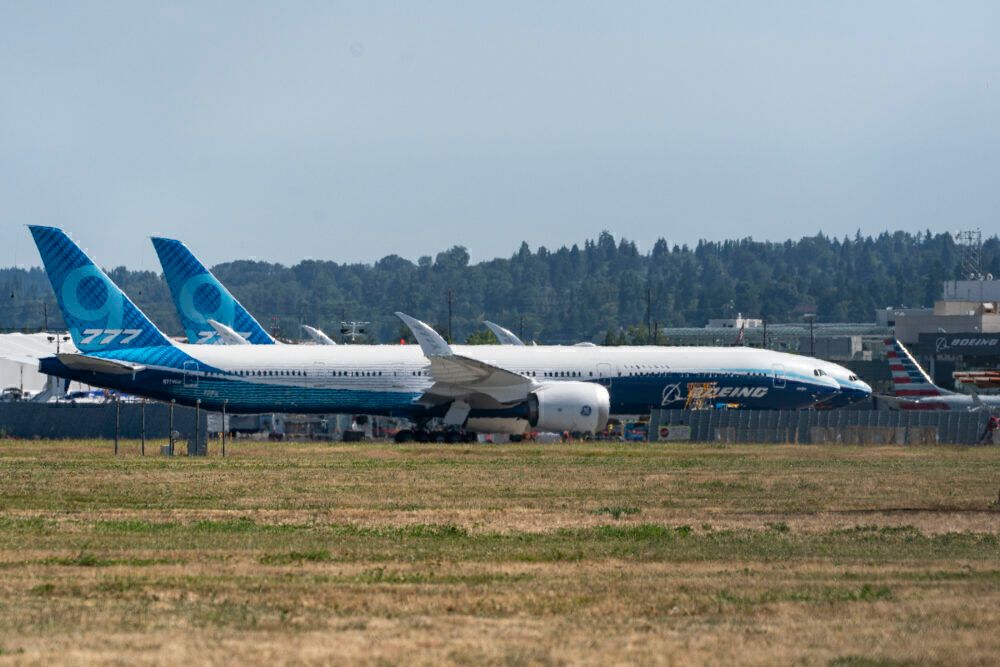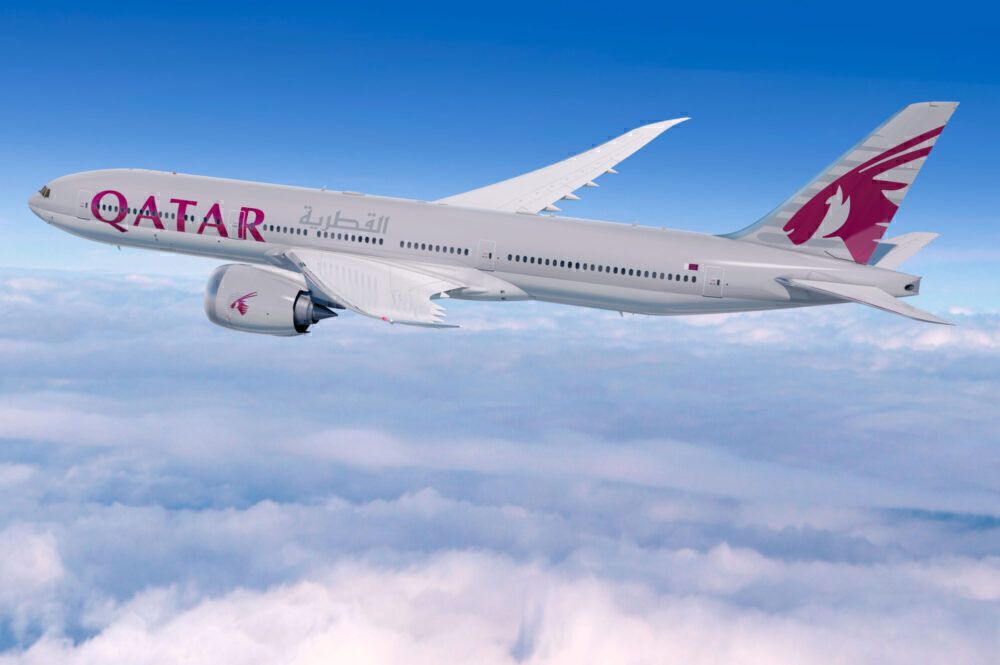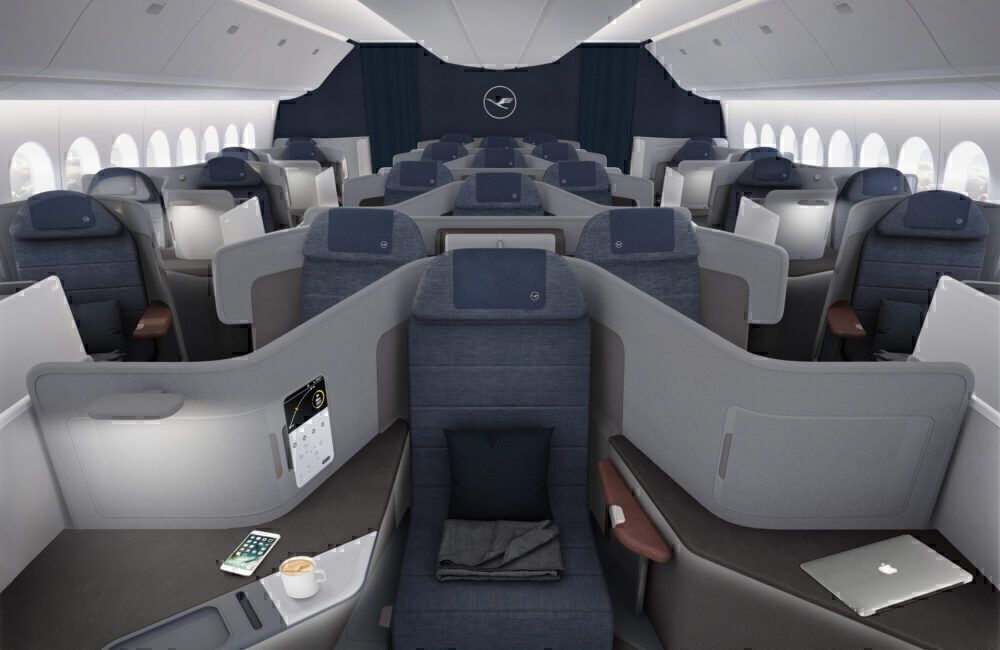The new Boeing 777X took its first flight in early 2020 but is not expected to enter service until 2023 at the earliest. Despite delays, it is one of the most anticipated new aircraft for some time. With high capacity and efficient twin-engine operation, it promises a modern replacement for retiring 747s and serious competition for the A350.
Launching the third-generation 777
The Boeing 777 has been the best-selling widebody aircraft to date. It was launched in 1994 and has seen several variants since. The 777X is the next member (the third generation) of the 777 family, sharing a lot in common with its predecessors, but also introducing some key new features.
Crucially, it retains the metal fuselage of the 777, rather than switching to a new composite structure (as Airbus has done with the A350). Fuselage width is increased by around four inches over the 777 (through thinner walls and more efficient insulation), giving a bit of extra space for seating. But wings, engines, and avionics are significantly changed.
The 777X was first proposed in 2011, with a targeting flying date of 2018, as a larger, more efficient successor to the 777-300ER. The original 777 filled the gap between the 767 and the 747. Up until recently, it has been marketed along with the 747 (right up to the new 747-8). With this no longer part of Boeing's offering, it needed a new aircraft to target the high-capacity end of the market.
Sticking with the 777 made sense at the time (and still does). Four-engine aircraft were clearly out of favor, and the very high capacity of the A380 was already starting to prove problematic for many airlines. Developing the 777 and increasing its capacity (and efficiency) using the latest twin-engine design was an obvious choice.
A new jumbo with plenty to offer
There will be two versions of the 777X, the 777-9 and the smaller 777-8. The 777-9 (the first to launch) offers a capacity of up to 426 (in a two-class configuration, according to Boeing data). The smaller 777-8 will offer a capacity of around 384. The 777-9 stretches the 777 fuselage to over 76 meters, and will become the longest commercial jet to date.
In comparison, the A350-900 offers a capacity of 315 and the A350-1000 of 369. The 777-300ER has a capacity of 368. The four-engine A340-600 offers a typical capacity of 440, and the 747-8 has a typical three-class capacity of 467. The gap between quads and twins is definitely shrinking with the 777X.
The smaller 777-8 will compete well against the A350-1000. But the 777-9 is really in a twin-engine category of its own. It definitely makes a good replacement for the 747 (as Boeing has marketed it), with comparable capacity but improved efficiency and a longer range.
A lot has changed in the aviation market since the 777X was launched. But it still works well. It suits the shift away from four engines and very large aircraft, and will perform well on hub and spoke, as well as the higher capacity point-to-point routes.
The delays to its development, although not intended, also fit well with the current slowdown in passenger traffic demand. IATA predicts traffic levels not returning to 2019 levels until 2024, about when we will start to see the 777X entering fleets.
Largest engines to date
The 777X engines are key to achieving its efficient operation. The new General Electric GE9X engines are the largest and most powerful commercial engines ever built. They are bigger than a 737 fuselage and will deliver 105,000 lbf of thrust.
But with a carbon fiber construction and fewer fan blades, they are actually lighter than the 777s GE90 engines. This contributes to the aircraft's efficiency improvements. Following 5,000 hours of testing and several delays, the GE9X engines finally received FAA certification in September 2020.
More efficient operation
With the 747 having been in service for over 50 years, it is no surprise that the 777X is significantly more efficient. It offers a cost per seat that is 33% lower than the 747-400, and 13% lower than the 777-300ER.
Such comparisons are difficult to validate until the aircraft is fully in service, of course. But Boeing claims that the 777-9 will offer operating costs up to 11% lower than the A350-1000. However, when we looked at this previously, we found (based on predicted range and fuel burn) the two aircraft would have similar fuel burn per seat.
It will be interesting to see how it performs in real-world scenarios.
Folding wingtips to increase operating airports
The 777X has a wingspan of 71.75 meters. This has several advantages, mainly in terms of its efficiency in flight. Such a large wingspan can be a problem, however, as airlines already found with the A380. Its wingspan places it in the largest of the six groups defined by ICAO - aerodrome code F - which would severely restrict the airports at which it can operate.
To reduce the wingspan on the ground and keep it in the lower aerodrome category of E, Boeing has added folding wingtips to the 777X. This reduces the wingspan to 64.82 meters on the ground (the limit for category E is 64 meters).
These wingtips were not an entirely new design. Back in the 1990s, Boeing secured a patent for folding wingtips on commercial aircraft. Lack of interest from airlines at the time stopped it from going ahead. Airbus also secured a patent in 2014, predicting a trend towards larger passenger aircraft but, likewise, never took it any further.
The 777X entering service
Delays in development and entering service
It's not all been good news with the 777X so far. It promises a lot but has suffered several delays and setbacks. Boeing's original plan was to have the new aircraft in the air by 2018 and in service around 2021.
There were initial delays due to engine issues and structural testing. Most dramatically, in September 2019, the fuselage was ripped apart during stress testing. Production delays have also crept in due to the slowdown during the pandemic.
The delays are not necessarily bad news for all airlines. Whilst some are keen to start flying the new aircraft, many are, of course, facing their own slowdowns. Some breathing space before new aircraft enter the fleet could be welcome.
There has, however, been a reduction in orders. In July 2020, there were 350 orders from eight airlines (Emirates, Qatar Airways, Etihad Airways, Cathay Pacific, Singapore Airlines, ANA, Lufthansa, and Brtish Airways). In February 2021, this had fallen to just 191 firm orders.
Emirates and the 777X
With the largest 777X order of 115 aircraft, Emirates is of particular interest. The airline will use the new aircraft to gradually replace its fleet of A380 aircraft as they retire. With delays to the 777X, the A380s could stay in service for longer.
While it still retains its orders, there are signs of frustration. Speaking to Simple Flying in April 2021, Emirates' President Sir Tim Clark referred to the Boeing 777X program being “in a state of disarray." There have already been delays, but Clark believes that Boeing may not deliver the first Emirates 777X until as late as 2025. He explained to Simple Flying:
“I did have an engagement a couple of weeks ago with the head of Boeing civil Stan Deal. We were discussing mainly things around the 777 programme, which is in a state of disarray at the moment… Now, not being able to factor in the 777-9, or -8 at this stage is a little bit of a problem, so we had to have a conversation with them.”
When will we see the 777X in service?
The 777X started test flights in January 2020. Four test aircraft are now operational. At the end of March 2021, one of these aircraft operated a test flight of just over 10 hours - the longest yet, and a good sign of progress.
As of April 2021, the latest estimate for the 777X entering service is 2023. Boeing president and CEO Dave Calhoun explained the latest change in a statement, saying:
"This schedule, and the associated financial impact, reflects a number of factors, including an updated assessment of global certification requirements, our latest assessment of COVID-19 impacts on market demand, and discussions with customers with respect to aircraft delivery timing."
Which airline will get the first 777X is currently unclear. Originally, it was thought that Emirates would be the launch customer. More recently, Lufthansa was thought more likely. And it now seems Qatar Airways may have taken the position. According to comments made by its CEO, Akbar Al Baker, in April 2021, the airline could take delivery of its first three aircraft in 2023. British Airways says it expects its first aircraft in 2024.
Flagship offering for several airlines
As well as efficient fleet upgrades, the 777X promises a lot for the passenger in terms of cabin upgrades. Several airlines will use the new aircraft to launch or expand new premium products. This includes:
- British Airways has confirmed the 777X will get its new Club Suite product. This is already available on the A350-100, 787-10, and some 777s and is a significant improvement over its dated Club World seating.
- Qatar Airways has said it is looking at a new ultra-premium first class cabin on the 777X, possibly to coincide with the retirement of A380s.
- There has been discussion about a new first class, and possibly business class, from Singapore Airlines for the 777X, but this has not yet been confirmed.
- Lufthansa originally planned to launch its new business class on the 777-9, but this is now more likely on the 787 or A350 following 777X delays.
Will there be a 777X freighter version?
Boeing has discussed in the past the possibility of basing a freighter version on the 777-8, but nothing has been confirmed. Such a development would make sense, though.
Boeing already dominates the cargo market with the 747 and 777 freighters. Boeing claims that an additional 1,040 widebody freighters will be needed in the coming 20 years. There is certainly space for a new freighter that can benefit from the 777X upgrades.
At the Paris Airshow in 2019, Qatar Airways expressed its interest in being the launch customer for a freighter version. Qatar Airways already operates 24 Boeing 777 and 2 747-8 freighters. We will have to wait and see if this happens.
There have been delays, but the 777X is now flying and eagerly awaited by airlines and passengers. Feel free to discuss your thoughts about the aircraft, its possibilities, and what further orders or developments could come.

